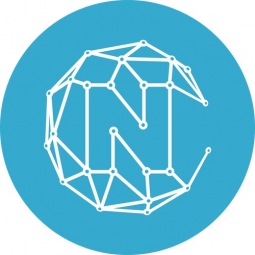
技术
- 分析与建模 - 预测分析
- 分析与建模 - 实时分析
- 应用基础设施与中间件 - 区块链
- 基础设施即服务 (IaaS) - 其他
适用行业
- 零售
适用功能
- 商业运营
用例
- 行为与情绪追踪
- 交通监控
客户
基尼和乔尼
关于客户
Gini & Jony 是印度儿童时尚品牌,自 1980 年以来由 Lakhani 兄弟推广。该品牌通过公司自有和特许经营店的组合销售服装,目前在 106 个城市拥有 200 个独家品牌
挑战
Nucleus Vision 的客户 Gini & Jony 和实体店零售客户一般很难获得个性化定价、定制优惠或作为品牌或商店忠诚者的优惠待遇。这主要源于商店无法区分线下商店的客户。
解决方案
Nucleus Vision 是一种端到端的技术解决方案,它通过其专有的区块链和实时传感器技术捕获并向零售商和其他“实体”企业提供以前无法访问的数据。 Nucleus 构建的解决方案目前在 10 个现场零售场所部署了 ION 传感器,将为唯一访客 ID 和相应用户数据提供有价值的数据网络。 Nucleus 专有的物联网传感器技术不依赖于任何 RFID、WiFi 蓝牙甚至面部识别技术来运行。
Nucleus 的物联网解决方案使世界各地的零售品牌能够利用来自现场和在线渠道的数据构建和执行以客户为中心的购物体验。
Nucleus 的平台使用区块链、传感器、数据和智能分析来创建能够产生客户忠诚度的自动化解决方案。对于零售商而言,Nucleus 的物联网解决方案提供了对客户行为的洞察,这在以前是不可能的,例如能够跟踪客户访问、浏览过的过道和店内走的路径、最喜欢的产品和品牌,以及预测未来客户在店内的行为。
收集的数据
Customer Visits, Human traffic, Network ID
运营影响

Case Study missing?
Start adding your own!
Register with your work email and create a new case study profile for your business.
相关案例.

Case Study
Improving Production Line Efficiency with Ethernet Micro RTU Controller
Moxa was asked to provide a connectivity solution for one of the world's leading cosmetics companies. This multinational corporation, with retail presence in 130 countries, 23 global braches, and over 66,000 employees, sought to improve the efficiency of their production process by migrating from manual monitoring to an automatic productivity monitoring system. The production line was being monitored by ABB Real-TPI, a factory information system that offers data collection and analysis to improve plant efficiency. Due to software limitations, the customer needed an OPC server and a corresponding I/O solution to collect data from additional sensor devices for the Real-TPI system. The goal is to enable the factory information system to more thoroughly collect data from every corner of the production line. This will improve its ability to measure Overall Equipment Effectiveness (OEE) and translate into increased production efficiencies. System Requirements • Instant status updates while still consuming minimal bandwidth to relieve strain on limited factory networks • Interoperable with ABB Real-TPI • Small form factor appropriate for deployment where space is scarce • Remote software management and configuration to simplify operations

Case Study
Digital Retail Security Solutions
Sennco wanted to help its retail customers increase sales and profits by developing an innovative alarm system as opposed to conventional connected alarms that are permanently tethered to display products. These traditional security systems were cumbersome and intrusive to the customer shopping experience. Additionally, they provided no useful data or analytics.

Case Study
How Sirqul’s IoT Platform is Crafting Carrefour’s New In-Store Experiences
Carrefour Taiwan’s goal is to be completely digital by end of 2018. Out-dated manual methods for analysis and assumptions limited Carrefour’s ability to change the customer experience and were void of real-time decision-making capabilities. Rather than relying solely on sales data, assumptions, and disparate systems, Carrefour Taiwan’s CEO led an initiative to find a connected IoT solution that could give the team the ability to make real-time changes and more informed decisions. Prior to implementing, Carrefour struggled to address their conversion rates and did not have the proper insights into the customer decision-making process nor how to make an immediate impact without losing customer confidence.

Case Study
Ensures Cold Milk in Your Supermarket
As of 2014, AK-Centralen has over 1,500 Danish supermarkets equipped, and utilizes 16 operators, and is open 24 hours a day, 365 days a year. AK-Centralen needed the ability to monitor the cooling alarms from around the country, 24 hours a day, 365 days a year. Each and every time the door to a milk cooler or a freezer does not close properly, an alarm goes off on a computer screen in a control building in southwestern Odense. This type of alarm will go off approximately 140,000 times per year, equating to roughly 400 alarms in a 24-hour period. Should an alarm go off, then there is only a limited amount of time to act before dairy products or frozen pizza must be disposed of, and this type of waste can quickly start to cost a supermarket a great deal of money.

Case Study
Supermarket Energy Savings
The client had previously deployed a one-meter-per-store monitoring program. Given the manner in which energy consumption changes with external temperature, hour of the day, day of week and month of year, a single meter solution lacked the ability to detect the difference between a true problem and a changing store environment. Most importantly, a single meter solution could never identify root cause of energy consumption changes. This approach never reduced the number of truck-rolls or man-hours required to find and resolve issues.








